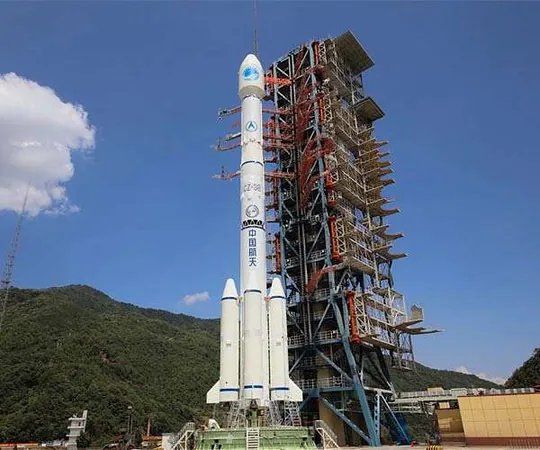
What Is the Universe Expanding Into If It's Already Infinite?
2024-12-09
Author: Charlotte
Introduction
When young Mael from Missoula, Montana, posed a fascinating question about the universe's expansion, he opened a discussion that captures the imagination of many: If the universe is infinite, what is it expanding into?
To understand this perplexing idea, let’s use an analogy. Imagine baking a loaf of bread or a batch of muffins: as the dough rises, it expands within the confines of a baking pan. The chocolate chips or blueberries embedded in the dough move further apart as the batter grows. However, this analogy falls short when compared to the universe's expansion. In reality, the universe is not expanding into anything. Instead, it is expanding within itself.
This concept can be challenging, even for seasoned physicists! In a way, the universe encompasses all that exists; asking what it's expanding into is akin to asking what lies beyond the North Pole – it simply doesn’t make sense.
The Expanding Universe
The universe we know began with the Big Bang approximately 13.8 billion years ago. This sudden event involved an extremely dense and hot singularity that underwent rapid expansion, a phase known as inflation. During inflation, every point in the universe began to expand—not in relation to something external, but within itself. Although the term "Big Bang" suggests a violent explosion, it was more about the universe’s rapid growth than a traditional blast.
As the universe expanded, it cooled and began to form matter and light, evolving into the cosmos we recognize today. Alexander Friedmann first theorized the universe’s expansion in 1922, laying the groundwork for future explorations. Edwin Hubble later provided solid evidence of this expansion in 1929 when he observed that galaxies are moving away from one another, demonstrating that the universe is not static but dynamic.
Dark Energy: The Hidden Force of Expansion
A mystery that continues to baffle scientists is the accelerating nature of this expansion. What force is pushing galaxies further apart? This phenomenon is attributed to 'dark energy,' a perplexing energy that makes up about 68% of the universe yet eludes direct detection. In contrast, ordinary matter—like the Earth and the stars we see—constitutes only about 5% of the universe's total energy.
Scientists visualize the universe's expansion using a funnel analogy. Picture a deep funnel: the narrow end represents the beginning of the universe, while the widening brim symbolizes how the universe has increasingly expanded since the Big Bang. This visual helps conceptualize complex ideas about galaxies moving away from each other.
The Multiverse and Beyond
So, what lies beyond the edges of our expanding universe? Currently, there’s no direct evidence of anything outside our known cosmos. Some theories suggest the existence of multiple universes or a multiverse, which could reconcile some challenges faced in physics—particularly the issue of unifying quantum mechanics with gravity.
The rules governing the quantum realm behave differently from classical mechanics. At quantum scales, particles can exist in states of probability, while large scales reflect a more predictable reality. Bridging these two worlds is no small feat, and researchers are exploring various hypotheses like string theory and loop quantum gravity to make sense of the universe's operations.
Conclusion
In conclusion, the universe, though expanding endlessly, remains a realm of mystery and intrigue. The distances between galaxies are increasing, forming a grand cosmic tapestry that continues to evolve over time.
Curiosity about the universe knows no age limit! If you’re wondering about something, don’t hesitate to ask – after all, exploration and knowledge are what propel humanity forward into the cosmos!









 Brasil (PT)
Brasil (PT)
 Canada (EN)
Canada (EN)
 Chile (ES)
Chile (ES)
 España (ES)
España (ES)
 France (FR)
France (FR)
 Hong Kong (EN)
Hong Kong (EN)
 Italia (IT)
Italia (IT)
 日本 (JA)
日本 (JA)
 Magyarország (HU)
Magyarország (HU)
 Norge (NO)
Norge (NO)
 Polska (PL)
Polska (PL)
 Schweiz (DE)
Schweiz (DE)
 Singapore (EN)
Singapore (EN)
 Sverige (SV)
Sverige (SV)
 Suomi (FI)
Suomi (FI)
 Türkiye (TR)
Türkiye (TR)